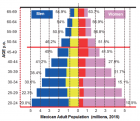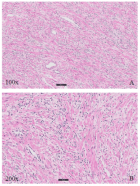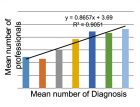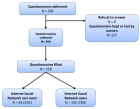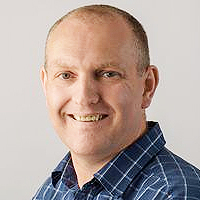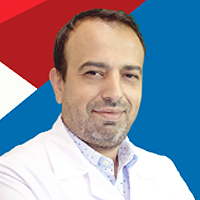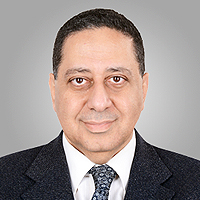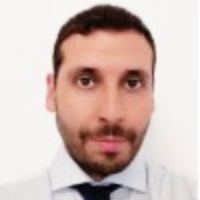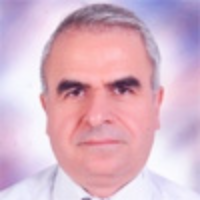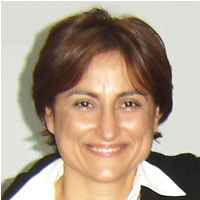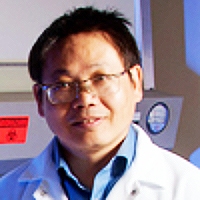Abstract
Research Article
Comparative Evaluation of the Effectiveness of Methods for the Treatment of Surgical Soft Tissue Infection
AO Okhunov*
Published: 17 November, 2023 | Volume 6 - Issue 1 | Pages: 005-011
Background: The presence of a multifaceted microbiological etiological factor of surgical infection and differentiated sensitivity to antibacterial drugs determines the need to develop more effective means and methods of influencing the purulent microflora of wounds. Physical treatment factors, in particular, low-frequency ultrasound and ionised plasma flows, should be considered promising for solving this problem.
Materials and methods: The research was carried out based on the Scientific Center of Microbiology and the clinic of the Tashkent Medical Academy. Bacteriological studies of wound discharge and biopsy material were carried out. We studied the material of purulent-inflammatory diseases of soft tissues.
Results: Wound-sounding through a dioxidine solution is most effective against gram-negative bacteria, and ultrasonic cavitation in combination with iodopyrone is most effective against gram-positive microorganisms. Treatment of purulent wounds with low-frequency ultrasound through a mixture of iodopyrone solution and ascorbic acid is effective against gram-positive and gram-negative microbes. Argon plasma flows have a high bactericidal effect mainly on gram-negative bacteria.
Conclusion: The obtained data substantiate the need to choose a physical method of treatment of purulent wounds depending on the species composition of the wound microflora.
Read Full Article HTML DOI: 10.29328/journal.ijcmbt.1001027 Cite this Article Read Full Article PDF
Keywords:
Surgical infection of soft tissues; Physical methods of treatment; Microbiological characteristics
References
- Orpovich OA, Abdikhamidovich KS. A combination of diabetes mellitus and acute purulent-destructive lung diseases solving the problems of diagnosis and treatment. World Bulletin of Public Health. 2023; 19:127-135. https://www.scholarexpress.net/index.php/wbph/article/view/2149
- Hansen T, Kunkel M, Kirkpatrick CJ, Weber A. Actinomyces in infected osteoradionecrosis--underestimated? Hum Pathol. 2006 Jan;37(1):61-7. doi: 10.1016/j.humpath.2005.09.018. Epub 2005 Nov 28. PMID: 16360417.
- Menon A, Soman R, Rodrigues C, Phadke S, Agashe VM. Careful interpretation of the wound status is needed with use of antibiotic impregnated biodegradable synthetic pure calcium sulfate beads: Series of 39 cases. J Bone Jt Infect. 2018 May 15;3(2):87-93. doi: 10.7150/jbji.22684. PMID: 29922571; PMCID: PMC6004684.
- Lee CY, Tsai HC, Kunin CM, Lee SS, Chen YS. Clinical and microbiological characteristics of purulent and non-purulent cellulitis in hospitalized Taiwanese adults in the era of community-associated methicillin-resistant Staphylococcus aureus. BMC Infect Dis. 2015 Aug 5;15:311. doi: 10.1186/s12879-015-1064-z. PMID: 26242240; PMCID: PMC4526200.
- OkhunovA, Atakov S, Sattarov I, Matmuratov K, Kasimov U, Abdurakhmanov F, Boboev Q, Fakirov A, Bobobekov A, Хudayberganova N. Clinical and Morphological Substantiation of the Choice of Treatment Method for Diabetic Foot Syndrome. Eur. Chem. Bull. 2023; 12:7; 4585-4597. https://www.eurchembull.com/issue-content/clinical-and-morphological-substantiation-of-the-choice-of-treatment-method-for-diabetic-foot-syndrome-9690
- Okhunov A. Navruzov B. Yuldasheva D. Kayumova D. Shukurov F. Azizova F. Gulmanov I, Khakimov M. Azizova P. Comparative Evaluation of the Effectiveness of Treatment of Deep Phlegmon of the Neck and Acute Secondary Mediastinitis. Journal of Advanced Zoology. 2023; 44(S-3):256–263. https://jazindia.com/index.php/jaz/article/view/594
- Khamdamov O. Diabetes mellitus and surgical infection. British Medical Journal.2023; 3:2;107-119. https://ejournals.id/index.php/bmj/article/view/855
- Okhunov A, Kayumova D, Korikhonov D, Shukurov F, Gulmanov I, Sattarov I, Azizova P. Diagnosis and treatment of necrotizing soft tissue infection complicated by sepsis. Eur. Chem. Bull. 2023; 12:7;7318-7330. https://eurchembull.com/issue-content/diagnosis-and-treatment-of-necrotizing-soft-tissue-infection-complicated-by-sepsis-11886
- Vanvelk N, Van Lieshout EMM, Onsea J, Sliepen J, Govaert G, IJpma FFA, Depypere M, Ferguson J, McNally M, Obremskey WT, Zalavras C, Verhofstad MHJ, Metsemakers WJ. Diagnosis of fracture-related infection in patients without clinical confirmatory criteria: an international retrospective cohort study. J Bone Jt Infect. 2023 Apr 21;8(2):133-142. doi: 10.5194/jbji-8-133-2023. PMID: 37123499; PMCID: PMC10134751.
- Okhunov AO, Korikhonov DN. Differential diagnosis of necrotizing fasciitis. British Medical Journal. 2023; 3:1;67-74. https://ejournals.id/index.php/bmj/article/view/772
- Okhunov AO, Bobokulova SA. Differentiated approaches to the diagnosis and treatment of acute lung abscesses in patients who have had COVID-19. British Medical Journal. 2023; 3:1;134-143. https://ejournals.id/index.php/bmj/article/view/782
- Solís-Téllez H, Mondragón-Pinzón EE, Ramírez-Marino M, Espinoza-López FR, Domínguez-Sosa F, Rubio-Suarez JF, Romero-Morelos RD. Epidemiologic analysis: Prophylaxis and multidrug-resistance in surgery. Rev Gastroenterol Mex. 2017 Apr-Jun;82(2):115-122. English, Spanish. doi: 10.1016/j.rgmx.2016.08.002. Epub 2016 Nov 21. PMID: 27884486.
- Okhunov AO, Boboev KK. Etiological factors leading to purulent mediastinitis. World Bulletin of Public Health. 2023; 18:118-125. https://www.scholarexpress.net/index.php/wbph/article/view/2081
- Boboev O. Etiology and pathogenesis of primary purulent mediastinitis. British Medical Journal. 2023; 3:1;144-154. https://ejournals.id/index.php/bmj/article/view/783
- Khamdamov O. Evaluation of the effectiveness of various methods of treatment of acute purulent-destructive lung diseases in patients with diabetes mellitus. British Medical Journal. 2023; 3:2;77-87. https://ejournals.id/index.php/bmj/article/view/811
- Kasimov UK, Ohunov AO, Fayzrahmon A. Munisovich Fargals in the treatment of necrotic infections of soft tissues on the background of diabetes mellitus. ResearchJet journal of analysis and inventions. 2023; 2:2776-0960. http://repository.tma.uz/xmlui/handle/1/6279
- Hassan MA, Tamer TM, Rageh AA, Abou-Zeid AM, Abd El-Zaher EHF, Kenawy ER. Insight into multidrug-resistant microorganisms from microbial infected diabetic foot ulcers. Diabetes Metab Syndr. 2019 Mar-Apr;13(2):1261-1270. doi: 10.1016/j.dsx.2019.01.044. Epub 2019 Jan 23. PMID: 31336475.
- Okhunov A, Bobobekov A, Abdusamatov B, Berdiev E, Sattarov I, Atakov S, Bobokulova S. Is it necessary to revise the methods of treatment of acute purulent-destructive lung diseases if they are sequels after COVID-19? Journal of Clinical Otorhinolaryngology, Head, and Neck Surgery. 2023; 27:2;1285-1293. https://www.lcebyhkzz.cn//article/view/2023/02_1285.php
- Men'shikov DD, Ianisker GIa. Kharakteristika énterobakteriĭ, vydelennykh pri gnoĭno-vospalitel'nykh protsessakh u bol'nykh s ékstrennoĭ patologieĭ [Characteristics of enterobacteria isolated during purulent-inflammatory processes in patients with critical diseases]. Zh Mikrobiol Epidemiol Immunobiol. 1980;(2):69-73. Russian. PMID: 7395405.
- Molotilov VF, Dodonov VN, Gladkova KK, Parchinskaia IA, Korotkov VV. Kharakteristika nekotorykh épidemiologicheskikh osobennosteĭ gnoĭno-septicheskikh zabolevaniĭ stafilokokkovoĭ étiologii v rodovspomogatel'nykh uchrezhdeniiakh [Characteristics of several epidemiologic features of suppurative-septic diseases of staphylococcal etiology in obstetric institutions]. Zh Mikrobiol Epidemiol Immunobiol. 1978 Mar;(3):120-4. Russian. PMID: 665028.
- Fadeev SB, Bukharin OV. Mikrobiologicheskie osobennosti khirurgicheskoĭ infektsii miagkikh tkaneĭ [The microbiological characteristics of soft-tissue surgical infection]. Zh Mikrobiol Epidemiol Immunobiol. 1999 Jul-Aug;(4):11-4. Russian. PMID: 10852041.
- Okhunov AO, Bobokulova SA. New approaches to treating lung abscesses as COVID-19 sequels. World Bulletin of Public Health. 2023; 19:101-107. https://www.scholarexpress.net/index.php/wbph/article/view/2281
- Zubarev PN, Epifanov MV, Krylov KM, Badikov VD. Osobennosti techeniia gnoĭnykh oslozhneniĭ ognestrel'nykh ran v Afganistane i nereshennye voprosy ikh profilaktiki i lecheniia [The characteristics of the course of suppurative complications of gunshot wounds in Afghanistan and the unresolved problems of their prevention and treatment]. Voen Med Zh. 1992 Apr-May;(4-5):52-4. Russian. PMID: 1523815.
- Okhunov AO, Korikhonov DN. Some ways to optimise diagnostic methods of necrotising soft tissue diseases. World Bulletin of Public Health. 2023; 19:230-235. https://www.scholarexpress.net/index.php/wbph/article/view/2220
- Okhunov AO, Usmankhodjaeva A, Babajanov A, Tavasharov B, Navruzov B, Boboev B, Khayitov I, Bazarbayev M, Khakimov M, Boboev Q. The role and place of sulfated glycosaminoglycans in the treatment of phlegmon, odontogenic origin. Journal of Clinical Otorhinolaryngology, Head, and Neck Surgery. 2023; 27:2;1222-1229. https://www.lcebyhkzz.cn//article/view/2023/02_1222.php#
- Oxunov AO, Abduraxmanov FM. To Some Questions About the Treatment of Diabetic Foot Syndrome in Patients with Covid-19. Eurasian Medical Research Periodical. 2023; 2795-7624. https://www.geniusjournals.org/index.php/emrp/article/view/4321
- Abdurakhmanov O. Ways to achieve positive results of dermaplasty in patients with diabetic foot syndrome. British Medical Journal. 2023; 3:1;92-98. https://ejournals.id/index.php/bmj/article/view/776
Figures:
Similar Articles
Recently Viewed
-
Leiomyosarcoma in pregnancy: Incidental finding during routine caesarean sectionToon Wen Tang*,Phoon Wai Leng Jessie. Leiomyosarcoma in pregnancy: Incidental finding during routine caesarean section. Clin J Obstet Gynecol. 2021: doi: 10.29328/journal.cjog.1001094; 4: 092-095
-
Adult Neurogenesis: A Review of Current Perspectives and Implications for Neuroscience ResearchAlex, Gideon S*,Olanrewaju Oluwaseun Oke,Joy Wilberforce Ekokojde,Tolulope Judah Gbayisomore,Martina C. Anene-Ogbe,Farounbi Glory,Joshua Ayodele Yusuf. Adult Neurogenesis: A Review of Current Perspectives and Implications for Neuroscience Research. J Neurosci Neurol Disord. 2024: doi: 10.29328/journal.jnnd.1001102; 8: 106-114
-
Late discover of a traumatic cardiac injury: Case reportBenlafqih C,Bouhdadi H*,Bakkali A,Rhissassi J,Sayah R,Laaroussi M. Late discover of a traumatic cardiac injury: Case report. J Cardiol Cardiovasc Med. 2019: doi: 10.29328/journal.jccm.1001048; 4: 100-102
-
A two-phase sonographic study among women with infertility who first had normal sonographic findingsKalu Ochie*,Abraham John C. A two-phase sonographic study among women with infertility who first had normal sonographic findings. Clin J Obstet Gynecol. 2022: doi: 10.29328/journal.cjog.1001117; 5: 101-103
-
Sinonasal Myxoma Extending into the Orbit in a 4-Year Old: A Case PresentationJulian A Purrinos*, Ramzi Younis. Sinonasal Myxoma Extending into the Orbit in a 4-Year Old: A Case Presentation. Arch Case Rep. 2024: doi: 10.29328/journal.acr.1001099; 8: 075-077
Most Viewed
-
Evaluation of Biostimulants Based on Recovered Protein Hydrolysates from Animal By-products as Plant Growth EnhancersH Pérez-Aguilar*, M Lacruz-Asaro, F Arán-Ais. Evaluation of Biostimulants Based on Recovered Protein Hydrolysates from Animal By-products as Plant Growth Enhancers. J Plant Sci Phytopathol. 2023 doi: 10.29328/journal.jpsp.1001104; 7: 042-047
-
Sinonasal Myxoma Extending into the Orbit in a 4-Year Old: A Case PresentationJulian A Purrinos*, Ramzi Younis. Sinonasal Myxoma Extending into the Orbit in a 4-Year Old: A Case Presentation. Arch Case Rep. 2024 doi: 10.29328/journal.acr.1001099; 8: 075-077
-
Feasibility study of magnetic sensing for detecting single-neuron action potentialsDenis Tonini,Kai Wu,Renata Saha,Jian-Ping Wang*. Feasibility study of magnetic sensing for detecting single-neuron action potentials. Ann Biomed Sci Eng. 2022 doi: 10.29328/journal.abse.1001018; 6: 019-029
-
Pediatric Dysgerminoma: Unveiling a Rare Ovarian TumorFaten Limaiem*, Khalil Saffar, Ahmed Halouani. Pediatric Dysgerminoma: Unveiling a Rare Ovarian Tumor. Arch Case Rep. 2024 doi: 10.29328/journal.acr.1001087; 8: 010-013
-
Physical activity can change the physiological and psychological circumstances during COVID-19 pandemic: A narrative reviewKhashayar Maroufi*. Physical activity can change the physiological and psychological circumstances during COVID-19 pandemic: A narrative review. J Sports Med Ther. 2021 doi: 10.29328/journal.jsmt.1001051; 6: 001-007

HSPI: We're glad you're here. Please click "create a new Query" if you are a new visitor to our website and need further information from us.
If you are already a member of our network and need to keep track of any developments regarding a question you have already submitted, click "take me to my Query."







